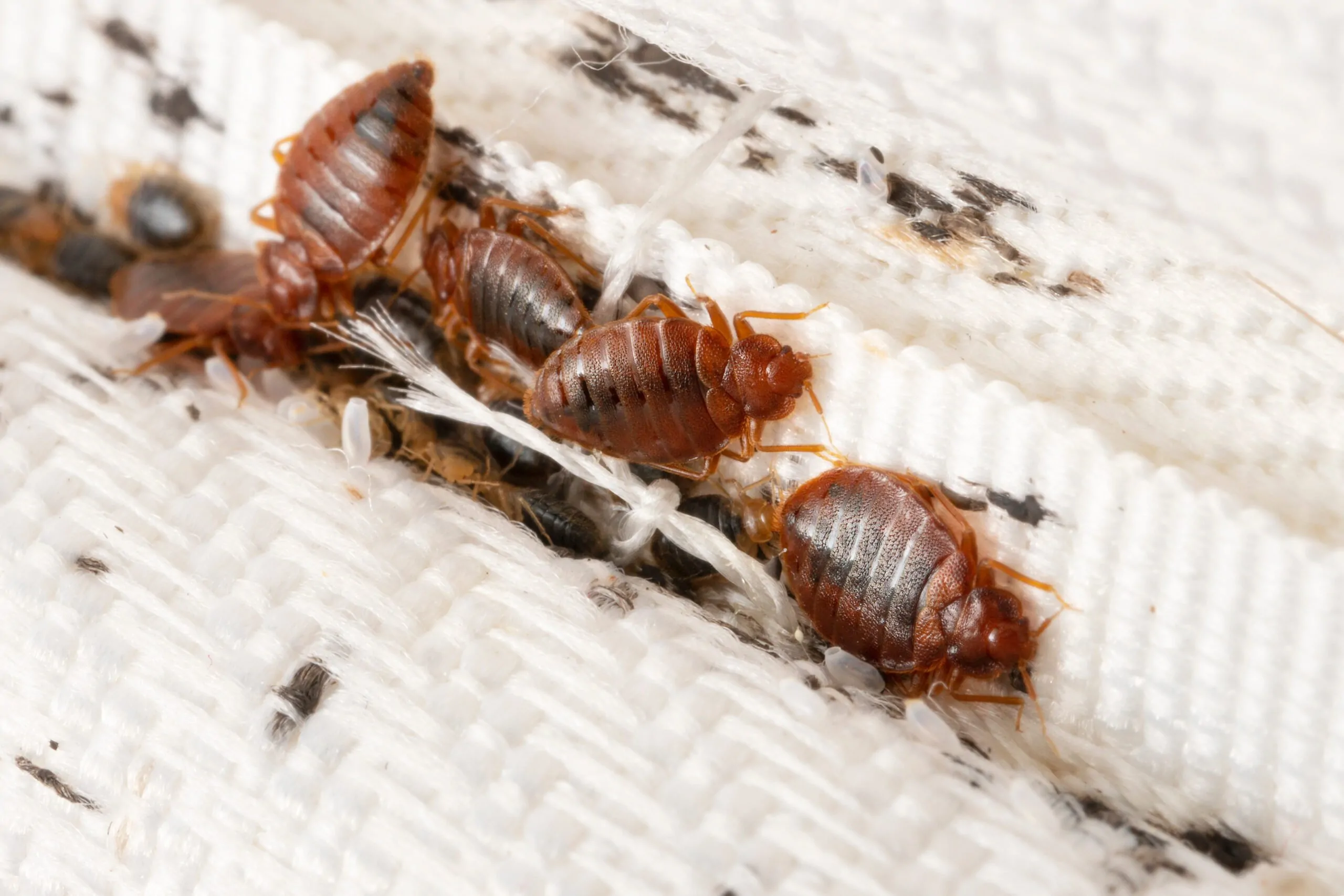
Unmasking the Hidden Threat
The Shocking Truth about Bed Bugs in Hotels!
Bed bugs are a global problem that has been steadily increasing over the past few decades. These tiny, blood-sucking pests are notorious for their ability to infest homes, apartments, and especially hotels. The hospitality industry has been hit hard by these pests due to their ability to spread quickly and easily from room to room and even from one hotel to another. This article will delve deep into the world of bed bugs, providing a comprehensive understanding of these pests, their life cycle, how they spread, and how to detect and control them in hotel settings.
Understanding Bed Bugs
What are Bed Bugs?
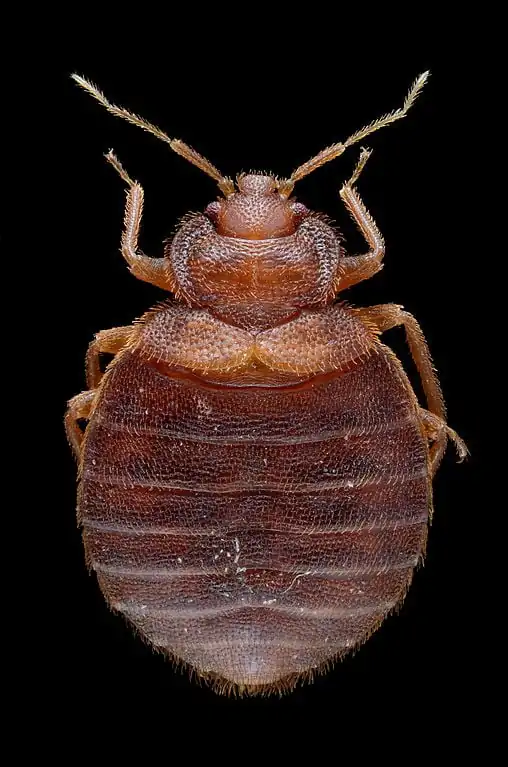 Bed bugs are small, parasitic insects that feed exclusively on the blood of warm-blooded animals, particularly humans. They belong to the Cimicidae family and are scientifically known as Cimex lectularius. Despite their small size, these pests can cause a significant amount of distress and discomfort due to their bites and the psychological stress associated with infestations.
Bed bugs are small, parasitic insects that feed exclusively on the blood of warm-blooded animals, particularly humans. They belong to the Cimicidae family and are scientifically known as Cimex lectularius. Despite their small size, these pests can cause a significant amount of distress and discomfort due to their bites and the psychological stress associated with infestations.
What do Bed Bugs Look Like?
Adult bed bugs are approximately 5-7mm long, about the size of an apple seed. They have a flat, oval-shaped body that becomes swollen and elongated after feeding. They are brown in color but can change to a reddish-brown after a blood meal. Bed bugs have six legs, two antennae, and unlike many other insects, they do not have wings.
How to Tell Bed Bugs Apart from Other Insects
Bed bugs can be easily mistaken for other small, brown insects such as carpet beetles or bird mites. However, there are several key characteristics that set them apart. Bed bugs have a unique, musty odor that is often described as similar to wet, moldy clothes or sweet, rotten raspberries. They also leave behind small black or brown spots on bedding and furniture, which are droppings from the bugs.
The Life of Bed Bugs
How Bed Bugs Live and Reproduce
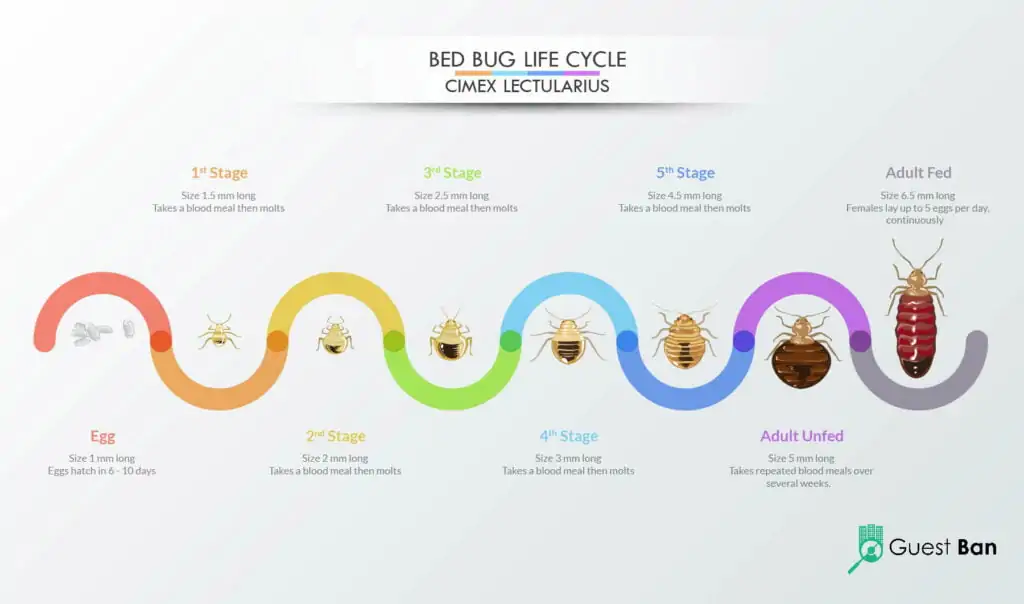
Bed bugs have a fascinating and somewhat horrifying life cycle. A female bed bug can lay up to 500 eggs in her lifetime, usually depositing them in cracks and crevices where they will be safe from disturbance. These eggs are white and about the size of a pinhead. Once hatched, the nymphs (baby bed bugs) will immediately seek out a blood meal so they can grow and molt into their next life stage. Bed bugs go through five nymph stages before reaching adulthood, requiring a blood meal before each molt.
Where Bed Bugs are Commonly Found
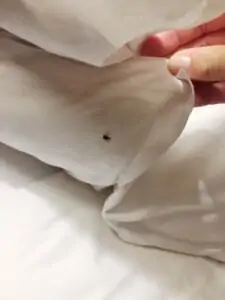
Bed bugs are not picky about where they live as long as they have access to a food source. They are most commonly found in places where people sleep, such as beds, hence their name. In hotels, they can be found in mattresses, box springs, bed frames, and even behind wallpapers and under carpets. They prefer to stay close to their food source and will often hide in tiny cracks and crevices during the day, coming out to feed at night.
Symptoms of Bed Bug Bites
Recognizing Bed Bug Bites
Bed bug bites are often mistaken for other insect bites or rashes due to their similar appearance. They typically appear as small, red, itchy bumps on the skin. These bites are often arranged in a line or cluster, usually on exposed areas of the body such as the face, neck, hands, or arms. One distinguishing feature of bed bug bites is that they often appear in the morning, as bed bugs are primarily nocturnal feeders.
Health Implications of Bed Bug Bites
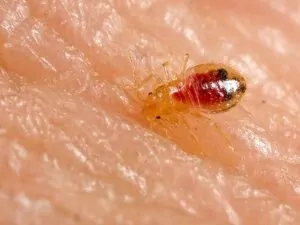 While bed bug bites are not known to transmit diseases, they can cause a range of health issues. The most common reaction is an itchy, red bump similar to a mosquito bite. Some people may develop an allergic reaction, resulting in larger welts or hives. In rare cases, severe allergic reactions can occur, requiring medical attention. Additionally, the constant itching can lead to skin infections due to scratching.
While bed bug bites are not known to transmit diseases, they can cause a range of health issues. The most common reaction is an itchy, red bump similar to a mosquito bite. Some people may develop an allergic reaction, resulting in larger welts or hives. In rare cases, severe allergic reactions can occur, requiring medical attention. Additionally, the constant itching can lead to skin infections due to scratching.
How Bed Bugs Spread
The Role of Travel in Bed Bug Infestations
Travel plays a significant role in the spread of bed bugs. These pests are excellent hitchhikers, easily latching onto luggage, clothing, and other personal items. When travelers stay in a hotel room infested with bed bugs, they can unknowingly transport these pests to their homes or other hotels, contributing to their spread.
How Bed Bugs Move and Spread in Hotels

In hotels, bed bugs can move from room to room through shared walls, electrical outlets, and even along hallway carpets. They can also be spread through the movement of infested furniture or laundry. This ability to spread quickly and stealthily makes bed bug infestations particularly challenging to control in hotel settings.
Detecting Bed Bugs in Hotels
How to Find Bed Bugs and Eggs
Detecting bed bugs can be a challenge due to their small size and nocturnal habits. However, there are several signs that can indicate their presence. These include small blood stains or dark fecal spots on sheets, a musty odor, and the presence of their shed skins. Bed bug eggs are tiny, about 1mm in size, and are often found in the seams of mattresses or other hidden areas.
Common Hiding Spots for Bed Bugs in Hotel Rooms
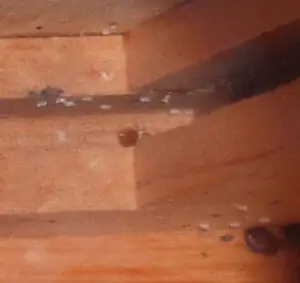
In hotel rooms, bed bugs can be found in a variety of places. They are most commonly found in the bed, including the mattress, box spring, and bed frame. However, they can also hide in other areas such as behind wallpaper, under carpets, in furniture, and even in electrical outlets.
Preventing and Controlling Bed Bug Infestations in Hotels
The Importance of Blocking Off Neighboring Rooms
When a bed bug infestation is detected in a hotel room, it’s crucial to block off not only the infested room but also the neighboring rooms. This is because bed bugs can easily move through shared walls, electrical outlets, and even along hallway carpets. Blocking off neighboring rooms helps to prevent the spread of the infestation and allows for a thorough inspection and treatment.
Cleaning and Treatment Procedures for Infested Rooms
Once an infestation is confirmed, the room should be thoroughly cleaned and treated. This often involves a combination of vacuuming, steam cleaning, and the application of chemical or heat treatments. All bedding and curtains should be washed and dried on the highest heat setting, and any clutter should be removed to eliminate potential hiding spots.
The Role of Heat Treatment in Bed Bug Control
Heat treatment is a highly effective method for controlling bed bugs. This involves raising the temperature in the room to a level that is lethal for bed bugs. Heat treatment can penetrate cracks and crevices where bed bugs hide, making it an excellent option for treating large areas and complex structures.
The Use of Bed Bug Bed Covers
Bed bug bed covers, or encasements, are another useful tool in the fight against bed bugs. These covers encase the mattress and box spring, trapping any bed bugs inside and preventing them from feeding. Over time, the trapped bed bugs die off, and the covers also prevent new infestations from taking hold in the bed.
Products and Methods for Killing Bed Bugs
Chemical Treatments for Bed Bugs
There are various chemical treatments available for controlling bed bugs, including insecticides and pesticides. These treatments can be effective, but they must be applied correctly and safely to avoid harm to humans and pets. It’s often recommended to hire a professional pest control service to apply chemical treatments.
Steam Treatment for Bed Bugs
Steam treatment is another effective method for killing bed bugs. High-temperature steam can kill bed bugs at all stages of their life cycle, including eggs. Steam treatment is especially useful for treating items that cannot be washed or subjected to heat treatment, such as furniture and mattresses.
Heat Treatment for Bed Bugs: How and Where to Use
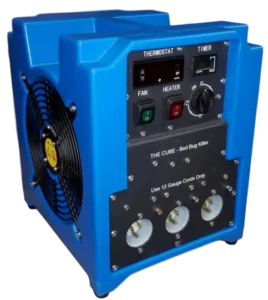 Heat treatment involves raising the temperature in a room or structure to a level that is lethal to bed bugs. This method can be used in a variety of settings, including homes, hotels, and even vehicles. Heat treatment is often performed by professionals, as it requires specialized equipment and knowledge to be effective and safe.
Heat treatment involves raising the temperature in a room or structure to a level that is lethal to bed bugs. This method can be used in a variety of settings, including homes, hotels, and even vehicles. Heat treatment is often performed by professionals, as it requires specialized equipment and knowledge to be effective and safe.
What Guests Should Do in Case of Bed Bug Infestations
Precautions to Take When Leaving an Infested Room
If you find yourself in a hotel room with a bed bug infestation, it’s important to take precautions when leaving to prevent spreading the bugs to other areas. Avoid taking your luggage into the infested room if possible. If you’ve already done so, seal your luggage in a plastic bag until it can be treated.
The Importance of Washing and Drying Clothes in High Heat
Bed bugs can’t survive in high heat. Therefore, washing and drying your clothes on the highest heat setting is a simple and effective way to kill any bed bugs that may have hitched a ride on your clothing. Remember to check and treat other items that can’t be washed, such as shoes and luggage.
What to Do with Your Suitcase
Your suitcase is a prime target for bed bugs looking for a ride to their next location. If you suspect your suitcase may have been exposed to bed bugs, it’s important to treat it before bringing it into your home. This can be done by vacuuming the suitcase thoroughly, using a steamer, or treating it with a pesticide designed for bed bugs.
The Reality of Bed Bug Infestations in Hotels
Statistics on Bed Bug Infestations in Hotels
Despite the best efforts of hotel staff, bed bug infestations can and do happen in hotels. According to a survey by the National Pest Management Association, hotels and motels were the third most common place for pest professionals to treat for bed bugs in 2018. This underscores the importance of being vigilant and knowing what to do if you encounter bed bugs in a hotel.
How Hotels React to Bed Bug Infestations
Hotels typically take bed bug infestations very seriously. Upon receiving a report of bed bugs, most hotels will immediately close off the affected room for treatment. Many hotels also have proactive bed bug detection and prevention programs in place to catch infestations before they spread.
Conclusion
Bed bugs are a common and persistent pest that can be found in hotels around the world. However, with knowledge and vigilance, both hotel staff and guests can play a role in detecting, preventing, and controlling bed bug infestations. By understanding what bed bugs are, how they live and spread, and how to recognize and react to an infestation, we can all contribute to the fight against these unwelcome guests.
Remember, the key to managing bed bugs is early detection and swift action. So, whether you’re a hotel owner, staff member, or guest, stay informed and stay alert. Together, we can keep our sleeping spaces safe and bed bug-free.
